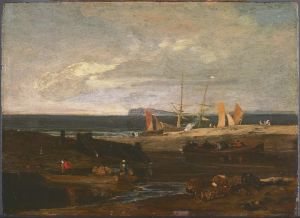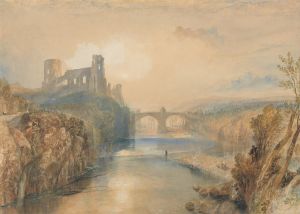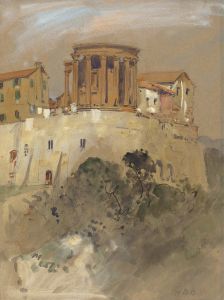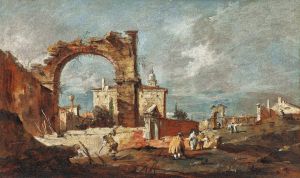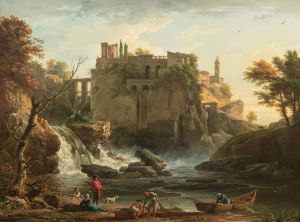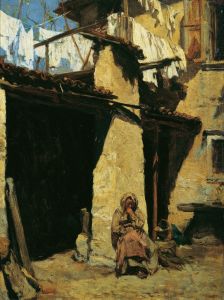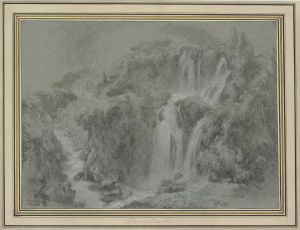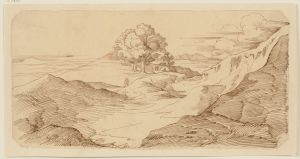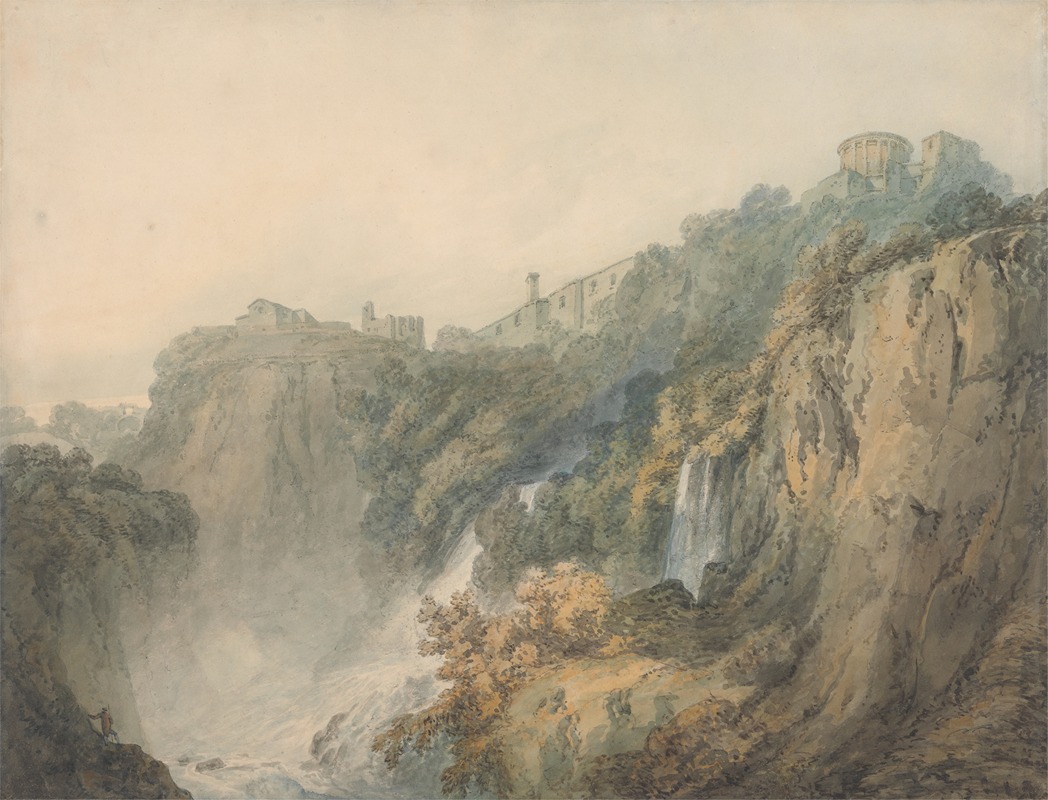
Tivoli with the Temple of the Sybil and the Cascades
A hand-painted replica of Joseph Mallord William Turner’s masterpiece Tivoli with the Temple of the Sybil and the Cascades, meticulously crafted by professional artists to capture the true essence of the original. Each piece is created with museum-quality canvas and rare mineral pigments, carefully painted by experienced artists with delicate brushstrokes and rich, layered colors to perfectly recreate the texture of the original artwork. Unlike machine-printed reproductions, this hand-painted version brings the painting to life, infused with the artist’s emotions and skill in every stroke. Whether for personal collection or home decoration, it instantly elevates the artistic atmosphere of any space.
Joseph Mallord William Turner, one of the most renowned British artists of the 19th century, created the painting "Tivoli with the Temple of the Sybil and the Cascades" during his prolific career. Turner, known for his expressive colorization, imaginative landscapes, and turbulent marine paintings, was a pivotal figure in the Romantic movement. His works are celebrated for their ability to capture the sublime beauty and power of nature.
"Tivoli with the Temple of the Sybil and the Cascades" is a testament to Turner's fascination with the Italian landscape, which he encountered during his travels. Tivoli, a town located near Rome, was a popular subject for artists of the time due to its picturesque scenery and historical significance. The Temple of the Sybil, also known as the Temple of Vesta, is an ancient Roman temple that sits atop the cliffs of Tivoli, overlooking the Aniene River. The temple, with its circular design and Corinthian columns, is an iconic symbol of classical architecture and has inspired numerous artists and poets over the centuries.
In this painting, Turner masterfully captures the dramatic interplay of light and shadow, a hallmark of his style. The cascading waterfalls of the Aniene River are depicted with a dynamic energy that conveys the natural power and beauty of the scene. The temple itself is bathed in a warm, golden light, which contrasts with the cooler tones of the surrounding landscape. This use of light not only highlights the architectural details of the temple but also creates a sense of depth and atmosphere that draws the viewer into the scene.
Turner's depiction of Tivoli reflects his interest in the interplay between nature and human achievement. The ancient temple, a remnant of a bygone era, stands as a testament to human ingenuity and artistic expression, while the surrounding landscape serves as a reminder of the enduring power and beauty of the natural world. This juxtaposition is a recurring theme in Turner's work, as he often sought to explore the relationship between humanity and the environment.
The painting is also notable for its use of color, which Turner employed to evoke emotion and mood. The warm hues of the temple and the vibrant greens of the landscape create a sense of harmony and tranquility, while the darker tones of the cascading water add a sense of drama and movement. This careful balance of color and composition is characteristic of Turner's mature style, which sought to capture the essence of a scene rather than its literal details.
"Tivoli with the Temple of the Sybil and the Cascades" is an excellent example of Turner's ability to blend realism with romanticism, creating works that are both visually stunning and emotionally resonant. The painting remains a celebrated piece within Turner's oeuvre and continues to be admired for its technical skill and artistic vision. Through this work, Turner not only pays homage to the beauty of the Italian landscape but also invites viewers to contemplate the timeless relationship between nature and human creation.





